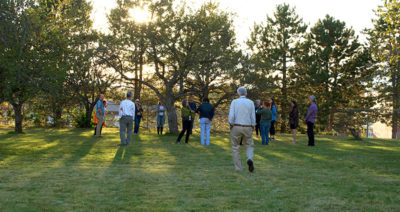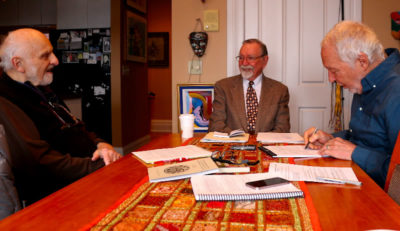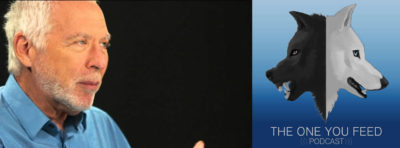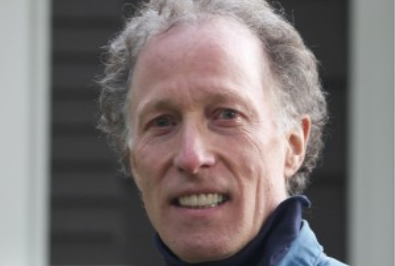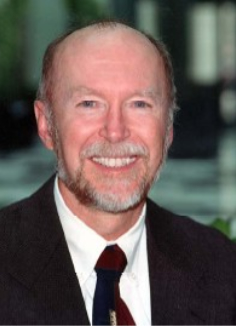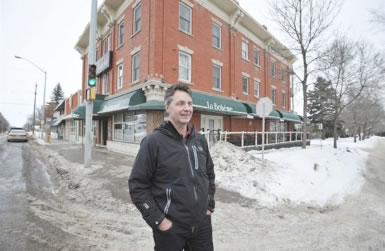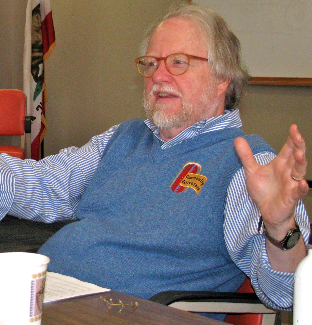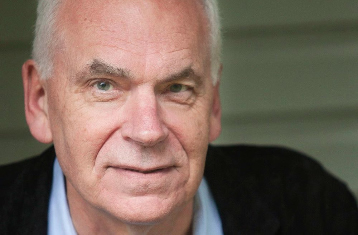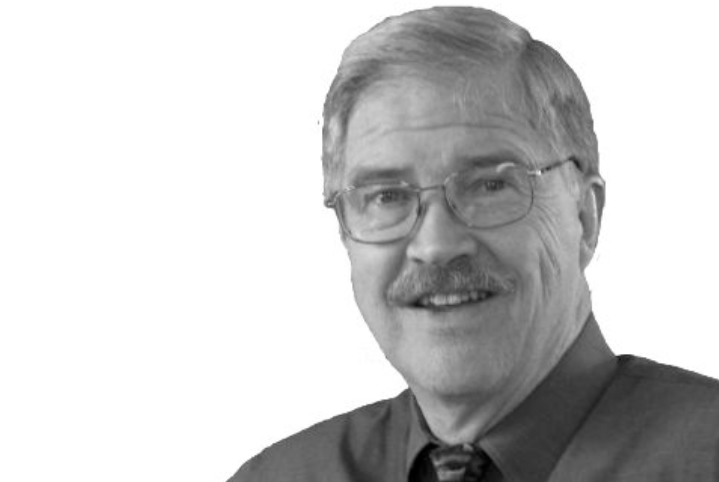Tag Archives: commons
We Don’t Need Butter, We Need the CowOr, Why Universal Basic Income is Not the Solution We Think It Is
Pioneering Space for the Commons
Announcing Common Good
Podcast: Freeing Yourself from Consumer Culture
What is the free market consumer ideology? How does its assumptions affect our lives? In this “The One You Feed” podcast, guest Peter Block discusses concepts from his book, An Other Kingdom, including the pillars of the free market consumer ideology: Scarcity, Certainty, Perfection, and Privatization. As people search for meaning and freedom, Peter shares how neighborliness and covenant are part of an alternative narrative.
Listen:
Quotes:
“Questions bring us together. Answers alienate us.”
“The scarcity mindset is a lie. There is enough.”
“The ‘how’ question destroys our faith in each other, as if the only thing that matters is how long, how much, how predicable.”
Related Read:
Peter Block on the Shadow Side of Culture
Making Space for Community
Working in the Gap to Enhance Productivity
Tom Mosgaller
Tom Mosgaller talks about the necessity of having “gappers” aka people who work in the space between citizens and institutions.
The Abundant Communities Initiative
Howard Lawrence describes how he has drawn inspiration from The Abundant Community for Community League: a group designed to “initiate a momentum of household connections.” He explains who “Block Connectors” are, and how these citizens create boundaries, have conversations, and pull people with similar interests together, all in the same neighborhood.
For ten years following the 2010 publication of their book The Abundant Community: Awakening the Power of Families and Neighborhoods, John and Peter hosted conversations with neighborhood activists on their community-building work. All their ideas are still at work and continue to be influential for anyone engaged in creating the future in the present. The transcript here has been edited for length and clarity.
The Abundant Community Initiative:
Conversation with Howard Lawrence
October 22, 2013
Peter Block: Howard, thank you so much for being our guest. This is the first initiative I’ve seen that actually uses the words Abundant Community. Could you give us a little background and talk about the choice of that language and how that fits into the context of the city?
Howard Lawrence: Thank you. John and Peter, it is just awesome to be with you. Our colleagues here in Edmonton are very excited about how we have come to this place piloting the Abundant Community Initiative in our city. I think it goes a long way back to Building Communities from the Inside Out. John and Jody’s book has been helpful in Edmonton to so many of our neighborhoods and I think many of us have tracked Asset Based Community Development through the years. The Careless Society was, of course, the shake-up book for many of us and we have appreciated it so much. Then Peter your book Community: The Structure of Belonging is one many of us followed. Then out of somewhere came your book The Abundant Community, which again in its simplicity was just so profound.
The first half of the book just resonated with what was on many of our hearts and then in the later chapters of that book you begin to outline how we might be able to make this practical. For me, in an already great neighborhood and in a city that has been divided up into really manageable and human scale neighborhoods through a Community League System as it is called, it just seemed like this would fit us perfectly. So the question became, how then do we take what was in the book, The Abundant Community, and experiment with it and apply some practices of our own to fit it for our own city and our own neighborhoods, beginning with the neighborhood that I lived in?
Peter: Describe the practices a little bit so people get a sense of what you are doing.
Howard: I think the first practice, which was basically handed to us by the city, was to define our boundaries. The city has for a century now divided the city up into what we call Community Leagues and these were really a grassroots form of government in particular neighborhoods with a long history and also a variety of other things, from sports to caring for the social well-being of individuals. So, it’s already divided. There’s already an elected government in each place and they pay attention to the concerns of the neighborhood. The neighborhood, my neighborhood in particular, and this wouldn’t be too unusual, is a neighborhood of a thousand homes with quite a natural boundary around it. You can see the map of my neighborhood, in fact, on The Abundant Community’s website. So that’s the first practice defining the neighborhood, which was again a gift for us.
John McKnight: May I ask if the neighborhoods that you have now begun to work with are defined the same as the Community League Foundation?
Howard: They are. Some are very well defined and they certainly have an active Community League.
John: So, you already had that structure in place, where the neighborhood was defined by this structure, it had been there for a long time, and it had some leadership.
Peter: What do you say is the goal or the purpose of your initiative?
Howard: It is to initiate a momentum of household connections within each block and the neighborhood. Shape the neighborhood life according to the residents’ vision of their neighborhood, to facilitate relationships through the formation of associations within the neighborhood, to connect the gifts, skills, and abilities of residents to neighbors and the neighborhood, and finally to connect block neighbors together through relationships with a block connecter. Those are the things we lay out.
John: That’s a wonderful statement if somebody wanted to find that definition of structure. Is it written someplace?
Howard: It’s on the article that we have called “Gluing A Place Together One Neighborhood at a Time”; in that article you can see we lay out those five points.
John: What is the process you have gone through?
Howard: We have naturally defined boundaries, which has been very helpful in local form of government. And then that local form of government works together and will work together with me to actually hire, with community funds –– which could be regional funds or the neighborhood funds –– to hire a Connecter Coordinator. That is a pretty big job, the Connecter Coordinator, which I will basically lay out now.
The history in Asset Based Community Development is that Roy Thompson was hired and we riffed on his experience here, but in any event the Connector Coordinator enlists, identifies, and organizes the Block Connecters. So, somebody on every block –– every block is approximately 20 homes –– identifies, enlists, and organizes that Block Connecter and then that Block Connecter’s job is facilitated and encouraged by the interview process. The Block Connecter would interview the 20 homes and then finally the information from that interview is collated or grouped together in data on behalf of the neighborhood and the Community League.
Peter: What has been the response of people to this idea? Do some of these neighborhoods think that they are already connected?
Howard: I will take it down to the block level and give you an example. A couple of weeks ago I identified a Block Connecter –– and it is amazing how keen they are –– and this person said to me that her block was already well connected. So, I said that is fantastic; please tell me about that. She told me that the block is connected because they wave at each other. They might not know everybody’s name, but they certainly have positive effect in the neighborhood and on the block. So, I asked whether they knew each others’ email addresses, each others’ interests, each others’ vision for the neighborhood, and so forth. I could see that she’s thinking, We need to do this on our block to get that additional information, even the email addresses. For example I know many places do this where one person on the block has all the emails so that if a garage door is left open they can message and make sure that the garage door is looked after. So, I would say it has been a positive response, overwhelming.
John: You are starting out by hiring someone to find Block Connecters. What kind of a person do you think tends to have that kind of ability? And when you are looking for a Block Connecter, is there any way of defining the kinds of people who tend to be responding or good at that? What do you look for?
Howard: Because of the early days of the pilot, I’m the first official Connecter Coordinator for our neighborhood; in my work here over the years, this gave me quite a bit of confidence to move ahead with this. I worked with other individuals who were able to excel at connecting people. They had a passion for their neighborhood. Karen Wilkin of the Laurier neighborhood has just been fantastic at pulling people together. Also Stu Carson in the Lendrum neighborhood. I think it is similar to what you lay out in your book: Somebody who cares about engagement in the neighborhood and who is engaged in the neighborhood, a positive person. Certainly, a person who is quite daring relationally and willing to initiate conversations with strangers. That would be the profile, I think.
John: You have also mentioned that you may find somebody who has a lot of those attributes, but the courage to begin to go knocking on the doors on a block is often a step most people haven’t taken. Have you learned something about how to get people to begin to take that kind of adventure?
Howard: One way is how I did some of that initially. As you know Edmonton is quite a snowy city in the wintertime. People are shoveling their walks and the block might be lined with individuals who have got their snow shovels out working. As a Connecter Coordinator looking for a Block Connecter, I can go talk to those people who are only too happy to take a moment to chat with me. I ask who a real connecter person is, a go-to person on your block, and inevitably they might tell me who that person is and I can follow that up. That would be one strategy. I think that I’ve learned to identify the kind of house that might have a Block Connecter behind it, and I have had good success in that.
John: Then if you are trying to get a Block Connecter, somebody from the block that you found to go do these interviews, what do you do to get them over the threshold? To get them over the fear that a lot of people have of doing that?
Howard: First, I do an interview with them and describe it as an experiment in interviewing, so that they get to actually participate. They can also ask me questions as we go along. What happens and how does this work? Another thing that has been very important for many is for me to actually do the first number of interviews with them. I would actually go along with them to their block and do a couple of interviews.
John: I know that if people are looking at the screen, they can see what you call a “Neighbour Conversation Guide.” We also have people joining us who are not looking at the screen. Could you describe what questions you are asking in the interviews? I know that you have a couple of parts and different kinds of questions. What are you asking them?
Howard: I will describe how I instruct and invite the Block Connecters to use this guide.
One thing about it is that it is quite simple. So, I say you can read this and that gives them a level of comfort; they can basically knock on the door and say, Hi, my name is John McKnight, I live just down the street just two doors down and I’ve seen you a number of times. And I’ll say, I’m here on the behalf of the Community League just to find out what you’re interested in. That immediately brings a great level of comfort for people. I think we have this high expectation of privacy, but when we get there, people are inviting you in. One time I was doing an interview and the person said, I would love to do this, but I’m cooking supper right now. So, I said, You keep cooking supper, and I will sit at your table and do the interview; she thought that was a great idea. So, people welcome you into their homes. There are lots of examples where people have had coffee, a glass of wine, and some of these interviews can take quite a while.
In the average scenario, though, the Block Connecter would just read the Guide and say that the purpose of these conversations is to make our blocks and our neighborhoods even better places to live. We are doing this by finding out and sharing amongst us each household’s vision for our neighborhood, the activities and interests which occupy us, and the gifts, abilities, and experiences we possess. And we say, Do you understand that? And they say, Yeah, that sounds good. Then we say, reading again, this form is intended to be a helpful guide to a brief conversation, which will hopefully be a part of an enduring conversation and connection.
And then we carry on and say, I’m here on the block so we will keep this conversation going and again we read from the Guide. This is not a confidential conversation or document. Our Community League’s hope is that the information from this conversation will be shared and used to build the fabric of our neighborhood through local groups and connections. And then we go on with the interview.
Peter: You know, it strikes me that you legitimize the role in the fact that you are there by saying, I’m here on behalf of the Community League, which means you are not a nosy neighbor. Some of the things I’ve been involved in, there is always the question of what you are doing there.
Howard: Yes, that’s very important, Peter, and I know that our Block Connecters find a lot of comfort in the fact that this is legitimized on a number of levels.
John: What would you do if you didn’t have a Community League, but you had this idea that you wanted to begin to implement? What would you do in the case of a lot of neighborhoods where people are listening, if you couldn’t say you were from the Community League?
Howard: I have spoken to a lot of different cities and neighborhoods where their neighborhoods don’t have a formal structure. I think it is a must that some kind of identifiable group be initiated. I just don’t know how you can move forward without that. If there was a resident association that could be morphed into something like this, or just a group of neighbors that could do the groundwork to say that we want to represent the neighborhood or we would like some representation in the neighborhood. I do think at this point that is important.
And the first question that we ask in Part One of the interview is the vision for the neighborhood. So, we ask, What do you value in a neighborhood? We say of all the places that you have traveled in the world or of all the neighborhoods that you have seen, what do you really love about neighborhoods? And they will say, We love safety and we love friendliness and we love walkability. They will give us a number of answers to that.
Then we ask a very specific question: What do you think the ideal Highlands neighborhood would look like? And they give us ideas around what they think the ideal neighborhood would look like. And I guess from an Asset Based Community Development approach, this is a last question often, but we put it up front as a way of people imagining the future together.
Now because we ask those questions, where does the answer to those questions go if we don’t have some kind of little group of leaders that are legitimized in the neighborhood?
Peter: Do you put all this together as a kind of summary report? What is being produced by this process?
Howard: We have put together a simple database. That data on the vision for the neighborhood goes to the Community League, and the Community League would then see that having an arts center would be nice, or having a steam room at the East Glen swimming pool. One person said more affordable housing, slower traffic on 112th, a senior’s condo in the neighborhood. Those are just some of the raw data from the interviews. This is collated and goes to the Community League leadership.
Then there are other questions that we put together that have different ends and those next questions are really pretty exciting. So again, to understand the extension that The Abundant Community book helped us to see was that rather than just settling with the associations that are within the neighborhoods presently, we actually had a thrust to identify and create more associational life. So, we asked the question, What activities or groups that you participate in or would like to participate in would you join in with neighbors? Then we would give a list of examples that they might choose. For instance, in my neighborhood, dog walking. So many people already walk their dogs, but they would like to walk their dogs together and have dog socialization groups. There was no way to put all the dog walkers together, but now because many people say the activity that I would like to do is dog walking, we can print a report that gives us all the dog walkers.
Then we can ask a question –– and John we owe this to you –– about other topics or activities that people are familiar enough with to perhaps lead in or teach to a group of neighbors. So, say Andrea has said, Yes, I am both a dog person and I would love to bring dog walkers together to lead them in walks. She now has the emails or the phone numbers of all those individuals. She can invite them to a couple of dog walking events per week that she will be on and lead.
Then we also ask more questions around interests.
Peter: Do the neighbors see the summary report of the data?
Howard: They can see some of it. The vision is given to the Community League leadership and that could be used as the leadership would like. They will post that ideally; they will see what’s posted and what the dreams are of the neighborhood. So once the dog walking group or the hockey team has been formed by people who said they want to play hockey or walk the dog, then that can go into our website or onto our little handout newsletter that we have in our neighborhood so that other people can join, but they are joining something that is ongoing.
John: Does the local Block Connecter initiate directly some connections based on the information gathered from the interviews?
Howard: We call that person an interviewer, but really they are a connecter and so we have seen examples of people just pulling people together. And when they hear the needs come out, they are not asking about needs, but they are identifying needs, they identify interests, and they pull people together. The neighbor would say to the Block Connecter, I would love it if we did a block party. So, throughout the interview process, the Connector feels like the neighbors are really seeing them as the leader of the block, the point person. So, they act as the point person for that block because, in fact, that is what they are.
On the interview form there is a section where we ask about gifts, abilities, and experiences to share. In the interview process, people are asked, What’s your gift or ability or an experience you might share for the benefit of neighbors? That’s been lovely, too. And that again is a list that goes to the Community League executive; for example, we will have people who are willing to shovel snow. We have people who are willing to help seniors with their pensions. We have people who are willing to babysit, and they get on a list of babysitters. So, they offer their gift to the neighborhood and that again goes to the Community League to post. Then, if a person needs a babysitter, they can phone an appointed individual who can say, Yes I have some babysitters; tell ,e who you are, where you live, and I will have that babysitter be in touch with you.
John: Can people do it on the Internet as well as calling?
Howard: We haven’t done that. That can probably be done through email; we are working on that. And this is another conversation, but a bit of a social media platform just for neighbors is really exciting, but that is another conversation for sure. Yes, it will be done in a variety of methods and the Internet will be one of them.
Peter: Have there been disappointments or frustrations that you felt inventing and guiding this process?
Howard: I think certainly some of the Block Connecters struggle, so I think identifying Block Connecters needs to be done very carefully and prudently. But at the same time, I just as I reviewed The Abundant Community again in preparation for this call, you said something that I can read it to you: This is an organic thing. This is something that, as you mentioned it in Community: The Structure of Belonging, is a slow process. It’s real. People are people. They are not paid so they move at their own pace and I’m very conscious of that in not goading the Block Connecters, but I always offer to go with them.
The number one phrase that I think I’m probably known for with the Block Connecters is, Can I go and meet some of your neighbors with you? Let me do that with you. So, to answer your question, Peter, the pace of connections being made might be something that I had expectations that they would get them done in a certain amount of time and in a quicker fashion.
Peter: That is a wonderful way of thinking about it. To be supportive and be with them and not to hold them accountable and not to have that kind of mindset. This is almost a kind of ministry for you, isn’t it? Are you connected with a church or a ministry in that neighborhood or area?
Howard: No, I’ve consulted with churches and I’m participant with consulting groups for churches where I would communicate with them around neighborhoods and the dynamics that would take place in neighborhoods. Many churches are asking how to serve neighborhoods and it has been a real struggle to find a good answer for that in this context. So, I help them with that.
John: Could you give us some background that led you to this?
Howard: Certainly, as a follower of Christ, as a Christian person, the great commandment is to love God and love your neighbor. For a while I have put a slash behind love your neighbor and said neighborhood. So how do we effectually love our neighborhoods? When I saw in The Abundant Community that we are valuing and recognizing and esteeming and understanding peoples’ giftedness –– which is of course to say that people are gifted –– then forming associations and liberating their gifts into groups is fantastic as well. Then extending your welcome to the margins and extending hospitality. Those things are just fantastic. They are rooted in things that are very similar to my faith orientation.
Maggie Rogers: We have a couple of questions on the chat. One question is what values or virtues are treasured most? Not needs, but qualities of being in human interactions.
Howard: That is a hard one to start with. Let me try. I think friendship, which has been a surprise for me in some respects because in the competent community and the qualities of a competent community, which we reviewed and appreciated in The Abundant Community, the initiative really highlighted friendship. Accepting people for who they are with their weaknesses and their strengths. Just being known for who you are is a quality of friendship, the kind of friendship that is leisurely around the neighborhood. I think that many people have really valued that. So, the virtue of being friendly and being transparent, which the neighborhood really helps to encourage, is a most treasured one.
Peter: Very nice. Do you have another one, Maggie?
Maggie: Here’s one. Outside of the Community League and official boundaries, have you been successful with multiple dwellings? For example, apartments or condo neighborhoods.
Howard: One of the next neighborhoods we are moving into has a higher density and of course there will be walk-ups there and apartment towers. In my own neighborhood, there are four-story walk-ups, and we also have a seniors’ home, which is three floors with about 12 residents on each floor. We have spoken with the manager who just had a meeting with their board to see if they would ok this. They have said yes and so we are planning to go in and find a senior who is a Floor Connecter –– it won’t be a Block Connecter –– and that senior will do the connecting and do the interviews on that floor. There are some walk-ups in my neighborhood. Meeting with the management of the four-story walk-up and having them onsite up to this point they have been fine, at least, in getting permission to go in. I think it will be challenging, but I know of another organization that helps to build relationships, social capital in apartment life, and so I believe that we can do that as well.
Peter: I think the way you thought through what kind of institutional support is very special about what you are doing in whatever neighborhood you moved to. For example, your way of asking the League or the manager about who is in this neighborhood that we can go to and, in a sense, feel invited, rather than going in as a stranger and to get people connected or find a Block Connecter. It is quite a structure to have a connecter or coordinator and I guess as you expand across the city you will add more people; that must be a key function. Do they bring together the Block Connecters? How does that work?
Howard: They really look after their Block Connecters. In our neighborhood, we have some lovely croissants at 10 o’clock on a Saturday morning, and we invite the Connecters to come and tell their stories. We have learned from your book and from other sources that the Block Connecters have a whole skill set that we are liberating and so that when we get together, we just tell stories that are wonderful. To inspire stories, we may pick a topic like knocking on the door or how to answer or how to draw people’s gifts out, which is tricky stuff. How to draw people’s interests out? Through the course of a conversation people will realize they have more gifts and interests than they did than when they first began. So, we meet together to eat croissants and share stories.
John: You have dealt with the city. Could you tell us a little about how you connected with the city? What their response has been? What kind of support, if any, they have provided? What their role is?
Howard: I have to tip my hat to the city. They have been very supportive and understanding and certainly they have a background in your work, John. They know that there is a special kind of relationship between the neighborhood and the city bureaucracy, but they also recognize that the timing of this is right in today’s culture and the culture of neighborhoods. One individual, Harry Oswin, is a very well respected director in the city and he had, as he said to me, some history in door-to-door work many years ago in Toronto. He saw the value in just connecting with neighbors. So, he is the person who saw the potential in this, and it’s been wonderful to champion this in the neighborhood; it’s been lovely to work with him.
I think there have been other materials out there that are wonderful. A conference done by Tamarack where they brought people together and asked the questions that seemed to be looming: Why are our neighborhoods back on the agenda? Why is asset-based thinking so critical? How do we decentralize city services? Can neighborhoods be the center of community life? Can neighborhoods be places of belonging? Can neighborhoods be places of caring? Then, can we formalize the role of neighborhoods and deliver services there? Can we formalize the role of social capital and how to build it? Finally, there are local and state policies that advance the neighborhood agenda.
Our city leadership has been sharp to see the possibilities in this and go slow, hence a pilot and then the second phase of a pilot. So, they have been very supportive and understanding. I will be on a contract with them; I won’t be a part of their staff as I’m not a staff person. I’m kind of a bridge between the neighborhood or the Connecter, the Community League, and the city leadership.
Maggie: We have a couple of calls coming in.
Anna (caller): I’m from Okotoks, Alberta. I was wondering if you could tell me how long the whole process was for you, from the moment you started working on it till you got something going in your neighborhood?
Howard: Thank you, Anna, and I’ve been in touch with Okotoks. Well, certainly reading the book, pondering it, and thinking how it might unfold in our neighborhood took a great deal of time. I would say months of pondering, but once the city decided to run a pilot –– it was probably November ––we thought that this would give us time to prepare because the spring is the time when people are inclined to be neighborly because the snow is melting, the birds are singing, the sun is coming up.
We really prepared for that, and we would work with the seasons. We did our groundwork with the Community League during January and February. We understood what the role of the Connecter Coordinator would be and that person was going to be me, and so I was already in the game. Then we began in those late winter months to recruit the Block Connecters.
So, it’s been a process. One of the things that we would have done at the front is that I would have had data collection more streamlined at the beginning, so that we could have more excitement around the groups that were being formed earlier. It’s exciting to be interviewed and to feel like your voice is being heard and the possibilities of groups being formed, but there is nothing like actually forming groups to create a buzz and excitement in the neighborhood. I think we could have gone more quickly if we had had our database in place earlier.
I think what this is doing, Anna, is it launches us with a new way of being in the neighborhood. It’s a new framework for interaction. So, people would ask the question, When is my interview coming? I had a note from a lady that I will read to you: “I really like the idea of this project. It certainly promotes the feeling of community. I hope that 64th Street can be done.” She doesn’t have a Block Connecter on her street yet. She goes on, “Personally I wish we had a place where locals could drop in for coffee, say one morning a week or every other week. Also, a knitter’s group would be good. I drive to Park Allen every week, but a local group would be good.” I still have to find a Block Connecter for that block; there are a few blocks that don’t have one yet and we are at nine months in, but once that Block Connecter is found we will do this work and they are not going to be sensitive to the fact that this was a one-year pilot. They are going to continue on. I continue on as a Block Connecter and a Connecter Coordinator.
I think it is a real change of framework that will linger for a long time. And certainly, groups coming together –– anytime you put a group of residents together, whether it is the dog walking group or the knitter’s group, the model train group, you can’t stop those –– they just keep going and going and going.
Maggie: We have another caller.
Caller: Hello, this is Incourage Community Foundation in Wisconsin Rapids, Wisconsin. Could you explain more about the Community League structure? What it looks like? How it got started? How is it connected with the other parts of the area?
Howard: I can give a try at that. I know that our community structure is about a hundred years old, and it was a city councilor who came from the New England states to Edmonton and had some sense of that. He instituted the beginning of the Community League; it was about caring for people who were struggling in those early days at the turn of the century and making sure nobody was forgotten in terms of food and a house over their head.
It began that way. It was more formalized over time through our City Council; they saw this as a good thing and formalized the role. In the 60’s it took on the role of, oftentimes, sports and recreation. Our sports and recreation in the city was very localized to neighborhoods. I think the kids had leather jackets with the name of their neighborhood on them and their hockey team and baseball team. Then through the 80’s and into the 90’s those sports and activities were regionalized. Community halls, which many Community Leagues built at the time, started hosting dances and whatnot and serving the neighborhood proper. Then over time that function regionalized to the wedding halls and the sports are regionalized.
So, the Community League has had to readjust in each era for the future. Now they are formalized. They receive funding through a variety of sources, from provincial and municipal sources, for the work that they do in the neighborhoods and that has changed and varied over time. They continue to exist in various levels of strengths in every neighborhood. They usually have a little newsletter. The city supplies a person from community service to coach and help each Community League so they do that in a regional way. The city really values the Community Leagues and it’s demonstrated through funding and these individuals who go and coach alongside the Community League structure.
John: Is there an electoral process? How is the leadership chosen?
Howard: Saying it’s an electoral process might be a bit of an overstatement, but it is certainly is that. People run for president, secretary, and vice-president so it has a legitimate board structure. They are formally constituted. There are bylaws for this small form of government. There is a bit of an election. It is a wonderful process. In the election last year for my neighborhood there were probably 50 people who came out; we elected a person who was the secretary and became the president. My son became the Civic Affairs person; he is a 20-year-old so this is his first crack at an office in government.
They meet together; a group of probably five or six are chosen, they have a budget, and they work on everything from making sure that the ice rink is flooded to initiating funding through the city for a new playground in the neighborhood. They take on issues, civic affairs issues, like traffic concerns that might be present in the neighborhood; they can be the voice to the neighborhood and the voice of the neighborhood to the city. It’s community consultation processes and oftentimes the city will look to the Community League for this. It’s pretty cool.
John: That’s wonderful.
Peter: We’ve got just a couple of minutes left. The Edmonton initiative is an amazing story. What I’m getting from this is that with the structures and the job titles you have created, you have organized this in a quite wonderful and useful way to legitimize it and to take some of the risks out of neighbors going to neighbors without an organizational context.
This is a wonderful description of what you are creating in the world. Anything else you would like to share with us, Howard?
Howard: Thank you. I would dare say that we just ever so slightly modified and extended what is already in The Abundant Community. While many people won’t know what’s in the book, The Abundant Community, the practices here embody or express what’s in the first chapters of that book. This movement from a consumer-centric way of being in the world, or from a systems way, to a citizen way or a community way is wonderful to see.
So, we are starting in the back of the book and moving our way to the front. I think that it is transformational. Our neighborhood is already being transformed. I see the brightness in people’s eyes when they hear this. When I talk about this with individuals, they get it. They would say, This is so simple, why have we not being doing this? So, thank you gentlemen for all the hard work to get us to that concise and simple book, The Abundant Community.
Approaches to Gifts, Welcoming and Hope
Bruce Anderson talks with Peter Block and John McKnight about how people are unified by the desire to feel welcomed in a community, how everyone has felt unwelcome at some point regardless of class or caste. He also discusses his initiative, WelcomeVashon, which is about finding a group of people who all share the desire to make their community more welcoming. He further speaks about the differences he sees in “community organizing” versus the idea of welcoming.





